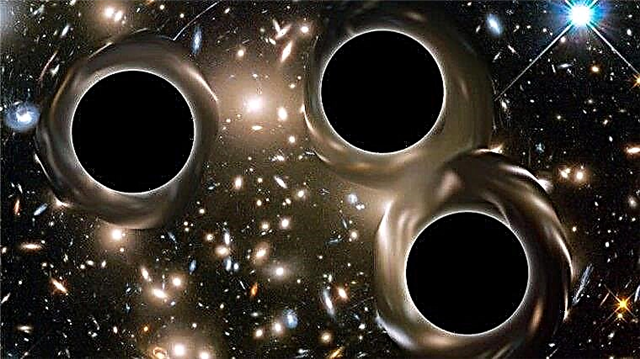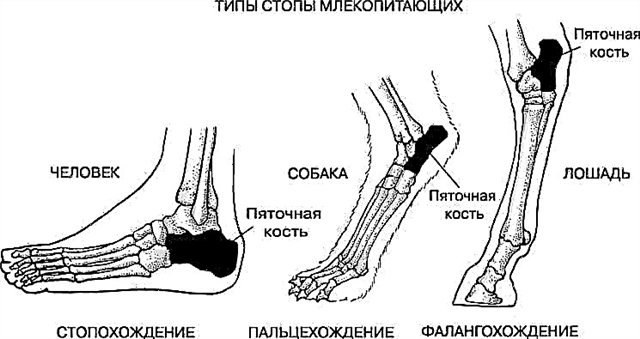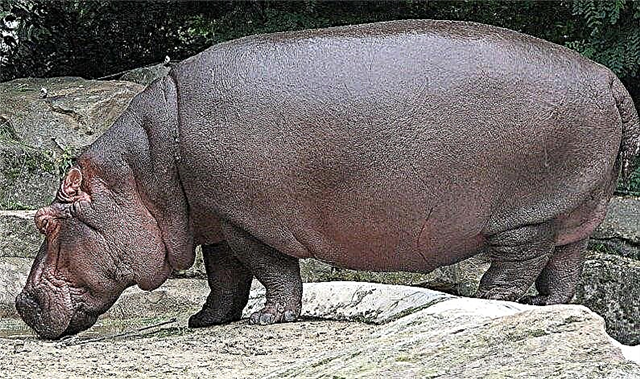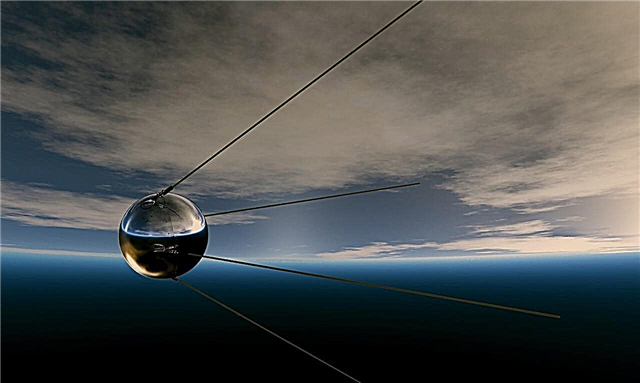
What are comets?
Comets are large space objects consisting of frozen gases, stones and dust, which, together with the rest of the celestial bodies of the solar system, revolve around a star. In their original state, comets are quite large and can be the size of entire cities. But in the process of their life cycle, when they are in the orbit of the Sun, comets gradually heat up as they approach a heat source, thereby losing their mass.
Not only does the sun heat them, it also attracts particles, which is why huge tails appear, stretching for many millions of kilometers, illuminating the darkness of space. What keeps the comet in motion and directs its path is gravity from all the planets and stars near which it passes. When a comet approaches the Sun, it moves faster and faster, because the closer the object to the source of gravity, the stronger it acts on it. The tail of the comet will not only move faster, but will also become longer, as more substances will evaporate.
Why are comets called comets?
Due to its appearance and tail, comets got their name, because “κομήτης, komḗtēs” is translated from ancient Greek as “tailed”, “hairy”, “shaggy”.
Interesting fact: the tail of the comet will always be directed in one direction. Imagination can draw these bodies with tails directed in the opposite direction to the movement. But in fact, it will always be directed away from the Sun.
Scientists believe that a lot of comets circulate in the solar system. To date, according to the official website of NASA, astronomers have registered 3595 comets.
History of the study of comets
In ancient times, people who were accustomed to give a mythological and divine character to any phenomenon did not pass by and strange luminous stripes in the sky, sometimes slipping in the night. Some called them the souls of the dead.
But time passed and a scientific thought developed. The first to declare comets to be a luminous gas was Aristotle. Behind him, Seneca already suggested that these mysterious celestial objects have their orbits.
Comets move in orbit, so they come back again and again to the field of view of astronomers. Theories were put forward about elongated elliptical orbits, but these theories did not find universal recognition and confirmation until the 18th century. The first such hypothesis was put forward by the German scientist Georg Derffel in 1681. Isaac Newton, only 6 years after the publication of the work of his predecessor, tried to explain it by presenting to the world his ingenious laws of gravity. Newton also stated that comets are rocky objects containing ice that evaporates as it approaches the Sun, thereby creating a tail.

In 1705, Edmund Halley studied all the documented occurrences of comets and tried to determine the parameters of their orbits using Newtonian physics. This led him to the theory that comets 1531, 1607 and 1682 were actually the same object that would appear 75 years after its last appearance. Halley became the first person who was able to successfully predict the comet's return - it appeared, exactly according to his calculations, in 1759. Then she got the name - Halley's comet.

The connection between meteor showers and comets was proved at the end of the 19th century, when the Italian astronomer Giovanni Schiaparelli put forward his hypothesis regarding the meteor shower Perseids, visible to the naked eye every August. Its systematic appearance is due to the fact that the Earth passes through a cloud of debris, which was left behind by the Swift-Tuttle comet. This theory allowed the scientist to conclude that comets have a solid surface that is covered with a layer of ice.
In the 1950s, American astronomer Fred Lawrence Whipple suggested that comets actually consist of more ice than stone and contain frozen water, carbon dioxide, and ammonia. Whipple's theory was confirmed by observations of spacecraft launched in the second half of the century.
Interesting fact: Over the years, comets have been interpreted as signs of impending doom or harbingers of luck. The Roman emperor Nero thought that the comet foreshadows his murder, and therefore he killed all his living successors. Pope Kallikst III actually tried to excommunicate Comet Halley from the church, believing that he was an agent of the devil. William the Conqueror considered the comet a good omen before his invasion of England in 1066.
The structure and composition of comets

Now we know that the nuclei of comets are mainly composed of ice, which evaporates when the comet is close to the Sun. This creates a vibrant vapor atmosphere consisting of charged particles called ions and dust particles, which can be composed of silicates, hydrocarbons and ice. This atmosphere is called coma. The nuclei of the observed comets have a length of tens of meters to about 60 km. Coma creates a shell around the core, which can be millions of kilometers wide, and is surrounded by an even larger shell of hydrogen.
Comet tail direction

Dust and steam create two separate tails, but they are usually directed in approximately the same direction. Both tails are always directed away from the Sun, but charged particles react more strongly to the magnetic field and solar wind, which makes it directed exactly in the opposite direction from the star. Dust particles are less susceptible to this effect, so the direction of the dust tail is curved depending on the comet’s orbit.
Interesting fact: In 2009, the NASA space probe took a sample from Comet Wild-2 and scientists found that it contains the amino acid glycine, an essential element for the origin of life. A recent study showed that a comet could fall to Earth, bringing up to 9 trillion organic materials, thereby providing the necessary energy and materials for the synthesis of more serious molecules, which subsequently created life.
What is the difference between comets and each other?
Comets differ from each other primarily in weight and size. They can vary greatly in size, but comets still remain small celestial bodies, given the size of other space objects. But if you had an amateur telescope and you watched comets in the night sky, you might have noticed that they also differ in brightness and shape. These parameters primarily depend on the chemical composition of the comet.
The origin of comets
The origin of comets can be determined by their orbital parameters. It is believed that comets that revolve around the Sun for less than 200 years come from the Kuiper belt. The Kuiper Belt is outside Neptune’s orbit and was hypothesized by the Dutch-American astronomer Gerard Kuiper in 1951. Currently, it is estimated that the belt contains about 1,000 billion comets.

It is believed that comets with periods of more than 200 years come from the Oort Cloud. The Oort cloud is a spherical cloud that rotates around the Sun at a distance of more than 1.5 light years from the edge of the Kuiper belt. This is a third of the distance to the nearest nearest star Proxima Centauri.
The Estonian astronomer Ernst Epik first suggested that comets with long periods of rotation could originate from the Oort Cloud in 1932, and this idea continued to develop in the writings of Jan Oort in 1950. It is believed that the Oort Cloud contains hundreds of billions of comets, and some of them may have such an amount of ice that exceeds the mass of all water on Earth by several times.
How are comets different from asteroids and meteorites?

Meteors are associated with bright flashes in the sky, which are often called “shooting stars”.Meteoroids are objects in space, the sizes of which vary from dust grains to small asteroids. In fact, these are just stones flying through space. When meteoroids enter the atmosphere of the Earth (or another planet, such as Mars) at high speed and burn up, fireballs or “shooting stars” are called meteors. When a meteoroid travels through the atmosphere and falls to the ground, it is called a meteorite. It all depends on the size of the cosmic body.
The asteroid, sometimes called small planets, are large, stone fragments without atmosphere that remained after the first stages of the formation of our solar system about 4.6 billion years ago. Most are between Mars and Jupiter. The sizes of asteroids vary greatly - they can reach a diameter of 530 kilometers or be very small and reach only 10 meters.The main difference between an asteroid and comet is their chemical composition.
Interesting fact: The total mass of all asteroids in the solar system is less than the mass of the moon.
How do comets get their name?
The history of the observation of comets has more than 2,000 years, during which several naming schemes for each of the comets were used. Today, some of the comets may have more than one name.
The very first system was characterized by the fact that comets received a name in honor of the year of their discovery (for example, the Great Comet of 1680). Later, an agreement was reached between astronomers that the names of comets will use the names of people associated with the discovery (for example, Hale-Bopp comet) or the first detailed study (for example, Halley's comet).

Since the 20th century, technology has constantly evolved and the number of discoveries has grown every year, so the need arose to create a more universal system using special numbers.
Initially, comets were assigned codes in the order in which the comets passed perihelion (for example, comet 1970 II). But even this system could not last long, because even she could not cope with the number of annual discoveries. So since 1994, a new system has appeared - a code is assigned based on the type of orbit and the date of detection (for example, C / 2012 S1):
- P / denotes a periodic comet defined for these purposes as any comet with an orbital period of less than 200 years or confirmed observations with more than one perihelion passage;
- C / denotes a non-periodic comet, that is, any comet that is not periodic in accordance with the previous paragraph;
- X / indicates a comet for which it is impossible to calculate the orbit (usually comets of their historical observations);
- D / indicates a periodic comet that has disappeared, crashed, or was lost. Examples include Comet Lexell (D / 1770 L1) and Comet Shoemaker-Levy 9 (D / 1993 F2);
- A / points to an object that was mistakenly identified as a comet, but is actually a minor planet. But for many years this name was not used, but in 2017 it was applied to Oumuamua (A / 2017 U1), and then to all asteroids in orbits similar to comets;
- I / denotes an interstellar object. This designation appeared recently, in 2017, to give Oumuamua (1I / 2017 U1) the most correct and accurate status. As of 2019, the only other object with this classification is Borisov's comet (2I / 2019 Q4).

Do comets pose a threat to the earth?
Since its formation more than 4.5 billion years ago, the Earth has been exposed to collisions with asteroids and comets many times, when their last orbit brought into the internal boundaries of the solar system and passes in close proximity to the Earth. Such objects in their entirety were called “near-Earth objects”.
Depending on the size of the impacting object, such a collision can cause enormous damage locally and globally. And this is an indisputable fact that at some point the Earth will again collide with another celestial body.There is compelling scientific evidence that cosmic collisions played a major role in mass extinction, recorded in fossils around the world.

Near-Earth objects have orbits that coincide in direction with the Earth, so a collision with them is not so destructive, since the speed of impact is greatly reduced. But comets travel around the Sun in slightly different ways that are extremely difficult to predict, so a head-on collision can occur, which can lead to disastrous results, the researchers say.
Unfortunately, the Earth’s atmosphere is not an ideal defense against cosmic disasters, because the size of comets can reach several kilometers. These are real mountains of stone and ice. When a comet enters the Earth’s atmosphere, its smaller particles evaporate and do not reach the surface, but large ones still fly. They create an explosion upon impact, which forms a crater. Some scientists believe that the largest craters on Earth were formed as a result of a collision specifically by comets.
The most famous comets in the solar system
Comet Halley

Halley's Comet is the most famous of all comets. After all, the British scientist Edmund Halley was the first who was able to prove the frequency of comets after his observations and analysis of data from astronomers of the past. He was able to accurately predict the return of the comet, which was first noticed in 1066. Halley's Comet, 8 km wide and 16 km long, rotates around the Sun every 75–76 years in an elongated orbit. The last time it passed close to the Earth in February 1986.
Comet Shoemakers-Levy 9

Comet Shoemaker-Levy 9 became famous for the fact that in 1992, under the influence of Jupiter’s gravity, it exploded into 21 parts, and then in 1994 all parts fell on the surface of the gas giant. This spectacle was observed by all amateur astronomers and professionals. It is alleged that the impact of one fragment - about 3 km in diameter - led to an explosion equivalent to 6 million megatons of TNT.
Comet Churyumov-Gerasimenko

Launched in 2004, the Rosetta space probe, owned by the European Space Agency, which was supposed to land on comet Churyumov-Gerasimenko in 2014. It is believed that the comet has a width of about five kilometers and currently revolves around the Sun about every 6.6 years. Its orbit used to be much larger, but the interaction with Jupiter's gravity since 1840 changed it to much smaller. Then the orbital vehicle spent almost two next to the comet when it headed back to the Sun. The probe studied the composition of the comet to help us better understand the history of the formation of our solar system.
Comet Hale-Bopp
In January 1997, Hale-Bopp's comet approached Earth at the closest distance in 4000 years. The last time this object flew near our planet in the Bronze Age, that is, 2000 years before our era. Comet Hale-Bopp is much larger and more central than Comet Halley. The core reaches 40 km in diameter and is visible to the naked eye. Hale-Bopp is so bright that it could be seen from Earth in 1995, when it was still outside the orbit of Jupiter.
Comet Borelli

This is the second comet after Halley, which was photographed in close-up using the spacecraft Deep Space 1, sent by NASA in 2001. This research mission provided a lot of data for scientists, thanks to which astronomers could understand a lot about the nuclei of comets. The images showed that the rocky core has the shape of a giant skittle 8 kilometers long, and the entire comet is strangely curved.
Unlike Halley's comet, which formed in the Oort Cloud at the outer borders of the solar system, Borrelli is believed to come from the Kuiper belt.
Comet Hyakutake

This comet made an indelible impression on scientists, when in 1996 it passed near our planet, approached the Earth at a distance of only 15 million kilometers, which was the closest distance to which any other comets were approaching. The comet puzzled astronomers because it emitted radiation beams 100 times more intense than expected.
The Ulysses spacecraft passed through the tail of this comet in May 1996, showing that its length is at least 570 million kilometers — twice as long as any other known comet.












